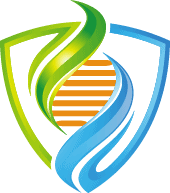Date Published :
05/09/2012
Summary
Abstract
While the antenatal onset of intracranial lesions associated with COL4A1 has been reported by us and others, this diagnosis has always been made after birth1 – 3 (Table S1). This is the first report of the diagnosis of a mutation in the COL4A1 gene in a fetus. A 35-year-old woman was referred after detection of a cystic lesion in the fetal posterior cranial fossa during ultrasound screening. She had no family history of anomalies or recent history of maternal or fetal trauma. Screening for TORCH and alloimmune antithrombocyte antibodies in maternal plasma, and polymerase chain reaction (PCR) for cytomegalovirus and quantitative fluorescent (QF)- PCR for trisomies 13, 18 and 21 in amniotic fluid were negative. Fetal neurosonography at 21 + 6 weeks’ gestation revealed hyperechogenic walls of the lateral ventricles and left-sided periventricular echogenicity. A large germinal matrix hemorrhage extended with a wedge-shaped echogenic lesion into the left thalamus. The left cerebellar hemisphere was replaced by an echolucent area with displacement of the right cerebellar hemisphere (Figure 1a). At 23 + 4 weeks, fetal MRI confirmed the ultrasound findings. The posterior fossa mass had expanded and had the appearance of an organizing hematoma with destruction of the left cerebellar hemisphere (Figures 1b and c). Repeat ultrasound scans showed mild progressive dilatation, more obvious echogenicity of the lateral ventricles and wedge-shaped cystic evolution of the left thalamus (Figure S1a).
Prenatal genetic confirmation of a COL4A1 mutation presenting with sonographic fetal intracranial hemorrhage
